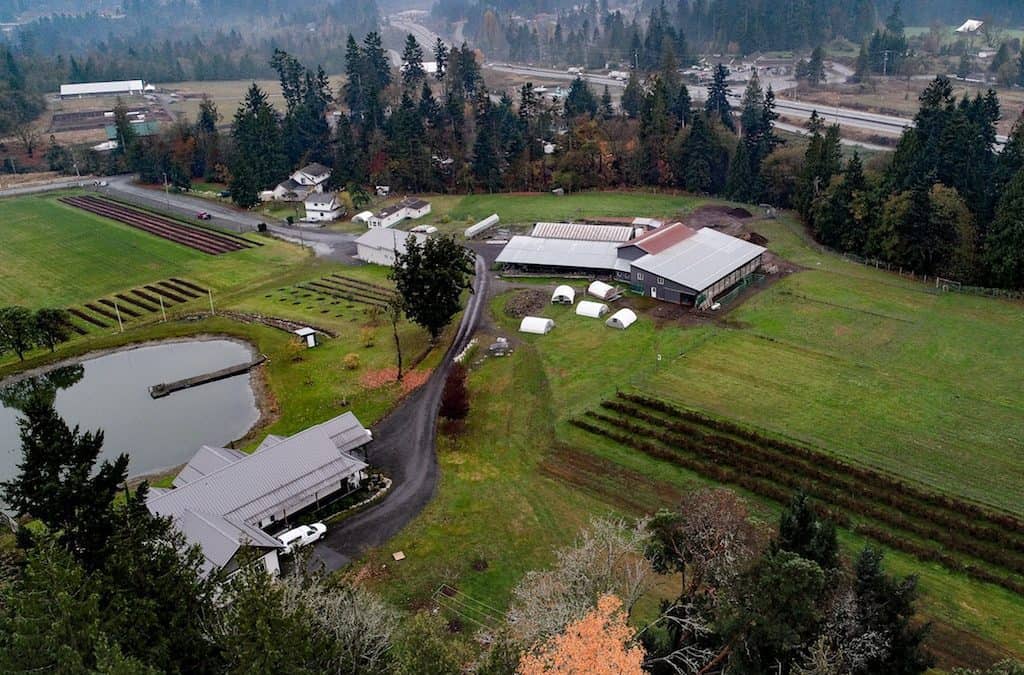Landscape design has a rich history in most countries of the world that followed on the heals of agricultural developments. Some of the earliest records show that in the 6th century BC that the hanging gardens of Babylon were created along the Euphrates river. The King of the day (so the story goes), King Nebuchadnezzar, built these gardens for his wife to remind her of her homeland. From these early times, people realized that they could alter landscapes in such a way to create a desired effect or outcome.
Today it is relatively easy to make drastic changes to a property with the use of excavators and skid steer loaders. What used to take weeks of hand labour can now be achieved in hours. With this advancement comes the risk of doing more harm than good; in my experience, this is a common outcome. The machinery that we have created has and continues to be an incredibly destructive tool to our ecology.
One way to ensure that we take the right path is to design with the whole in mind, integrated landscape design, regenerative design, or permaculture design, call it what you like. This approach to designing is not a new one; many indigenous tribes or groups around the world have been practicing these methods for centuries. Here’s an excellent definition of permaculture from Andrew Millison’s Introduction to Permaculture e-book.
“Permaculture design is a method of landscape planning that can be applied at scales from the home garden to city block to village to farm. It is an ethically based whole-systems design approach that uses concepts, principles, and methods derived from ecosystems, indigenous peoples, and other time-tested practices to create sustainable human settlements and institutions. Although rooted in horticulture and agriculture, Permaculture design is interdisciplinary, touching on a wide range of subjects including regional planning, ecology, animal husbandry, appropriate technology, architecture, and international development.”…
“A system is defined as “a set of connected things or parts forming a complex whole.” So when we refer to water systems, we’re recognizing that the way we design for water on a Permaculture site takes into account its’ many interconnections, with soils, trees, water tables, the atmosphere, and wildlife.”
When looking at land design through this lens, we tend to consider the whole rather than imposing our will on a site and making changes based on our desire to see things a certain way. During the early part of my career, I imposed my will in many landscapes as I was delivering what people thought they wanted. Often the aesthetic value was provided, but it came with a high price in terms of the installation cost and aftercare or maintenance.
The old saying, ‘There are many ways to skin a cat’ holds true with our experience in land design, after years of designing and constructing award-winning landscapes (using tradition design techniques) we made the switch and have not looked back. When we compare the two approaches, it’s apparent that an integrated design approach will not only function much better (aesthetically pleasing, ecologically beneficial and providing a yield), it’s often less costly to install and easier to maintain.
If you’re planning some changes to your landscape over the winter, I would highly recommend that you consider permaculture or regenerative design as your template or guide. If you want to learn more about this type of design, feel free to check out Andrew Millison’s free e-book, this is a great starting point.
At times the world’s problems can seem overwhelming if nothing else we can all have a positive effect within our properties and use ecologically sound practices to support the diverse life forms which live there.
Image source: https://beetrooted.wordpress.com/permaculture/
Sources:
LandscapeHub Blog: https://www.landscapehub.com/blog/the-history-of-landscape-design-2/
Introduction to Permaculture-Andrew Millison: https://open.oregonstate.education/permaculture/
By Jamie Wallace
Co-owner of Jaan Designs
Regenerative land designer, installer and educator



